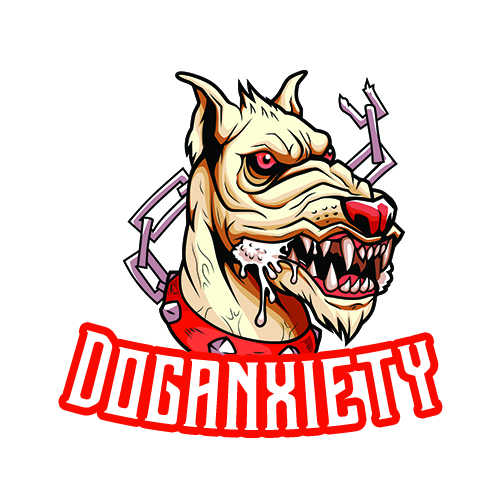Signs of
Dog AnxietyIt is very common for a dog to be anxious. The animal is always on guard and may even become invasive or aggressive.
If the dog’s anxiety is not an evil in itself, it can quickly drift into behavioural disorder in the dog. In the worst situations, stress can become difficult for both the master and the dog. It is therefore necessary to quickly identify an anxious dog, and seek to soothe it by all means.
In dogs, anxiety is a feeling that is often poorly controlled. It is generated by a fear that is not always justified, and can quickly drift into behavioural disorder.
Dogs can express their anxiety differently. If it is normal for a dog to be on the alert in a dangerous situation or facing an unknown animal, it is important to pay attention that the dog’s anxiety is not a problem.
Different “Signs and Symptoms” Can Tell You That Your Dog is Too Anxious
Your dog is afraid of the cage:
Indeed, many dogs are left alone in a cage without having been trained beforehand. The dog also lives in great distress, but the object of this is not the separation with the owners, but rather the fact of being locked up without being used to it.
The dog is bored:
It is possible that your dog destroys things in the house simply because it is an activity that occupies him and makes him pass the time.
There are gaps in education:
A dog can be messy because he just did not learn to remember his needs long enough to be able to do it for the duration of your absence. It can also be a puppy or a young dog that does not have the sphincter muscles yet developed enough to allow it to hold for several hours.
Noise in the environment that the dog is afraid of:
For example, if work is taking place on your street during the day when you are at work, it is possible that the noises they cause stress your pet and that this may leads to yapping.
Excessive gas
The panting is the means used by the dogs to evacuate the heat of their body. If you notice that your dog is panting in situations where he should be calm or your dog is breathing fast or breathing hard, he is probably stressed and needs to relieve the tension he is feeling. Sometimes panting may be accompanied by squealing and crying. If your dog suffocates from time to time, consult your veterinarian to find out if it is a physical health problem and not a psychological problem.
Excessive panting
The stressed dog usually feels uncomfortable with an unknown or stressful situation. If, for example, your dog suffers stress from other dogs, each of these encounters will push him to overreact. Your stressed dog will try to flee or react in a very negative way to this stimulation (whether it is a person, an environment, an object or a specific situation).
Hair loss usually occurs with chronic stress
When the dog begins to feel physically affected by the situation in which he finds himself. If you notice that your dog is starting to lose hair because of anxiety, you should consult a veterinarian as soon as possible. It can also lose its hair by too much licking (acral granuloma) or tear the hair directly with the teeth. Act quickly, your stressed dog sends you urgent signs.
Avoid these thing if your dogs has shown the above symptoms:
To leave without your dog realizing it
By doing so, you “lie” to your dog and as in any relation, the lies break the confidence. You may also increase the hyper vigilance of your dog.
Be angry when you return or punish your dog
Remember that these are panic attacks and that your dog can not control himself in your absence, he is not himself. Threatening him will only increase his stress, because it could associate your return to the negative and therefore the fear. He will not understand your anger either.
Adopt another dog
Adopt another dog: It’s a double-edged sword, because you can end up with not one, but two dogs suffering from anxiety, besides not guaranteeing that it will help your companion who is already suffering from it.
Leave him alone longer than he can handle
Leave him alone longer than he can handle. He will not learn to live the situation well if his threshold of tolerance is never respected.
Use an anti-barking collar (citronella necklace)
It is not by hiding a symptom that the anxiety is solved. In addition, your dog may indulge in self-mutilation.
